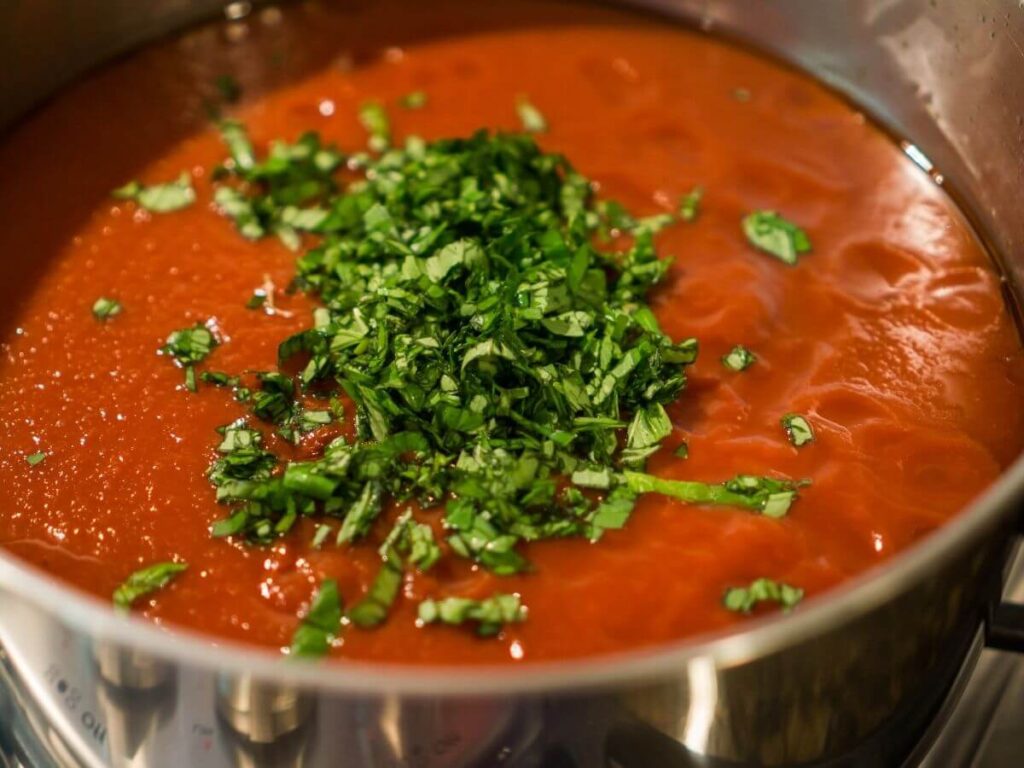
Sauces are one of the key elements in cooking that can make or break a dish. A good sauce can elevate a meal to new heights, but what do you do when your sauce turns out too thin or watery? The go-to solution for most home cooks is cornstarch, but what if you don’t have any or don’t want to use it? Well, fear not because there are plenty of alternative ways to thicken your sauce without relying on cornstarch. So if you are wondering how to thicken sauce without cornstarch? Read ahead and find out.
Can you thicken sauce without cornstarch?
Yes, you can thicken sauces without using cornstarch. Cornstarch is a popular thickening agent, but it may only be suitable for some due to dietary restrictions or personal preferences. Fortunately, there are plenty of alternative ingredients and methods you can use to thicken your sauce to your desired consistency. With creativity and experimentation, you can find the perfect thickening agent or technique that works best for you and your recipe.
Substitutions for cornstarch
Here are some of the most common substitutions you can use instead of cornstarch:
- All-purpose flour: All-purpose flour is a versatile ingredient used to thicken sauces. Mix flour as a thickener with cold water or broth to create a slurry, then add the slurry to your sauce and simmer until it thickens to your desired consistency. Note that all-purpose flour has gluten, which may not be a good choice if you have gluten allergies.
- Whole wheat flour: Similar to all-purpose flour, whole wheat flour can also thicken sauces. However, it may result in a slightly grainy texture. Whole wheat flour also has gluten in it.
- Potato/tapioca/arrowroot starch: These starchy flours are great substitutes for cornstarch and are perfect for thickening sauces, gravies, and soups. They are also gluten-free, making them suitable for those with gluten sensitivities.
- Rice flour: Rice flour is another gluten-free alternative to cornstarch. It has a neutral flavor and can thicken sauces and soups. You can use it just like all-purpose flour, i.e., as a slurry.
- Xanthan gum: Xanthan gum is a natural thickener often used in gluten-free cooking. You can be used in small amounts to thicken sauces and soups.
- Cheese: Cheese can thicken certain sauces, such as cheese sauces. When melted, cheese can add thickness and creaminess to a sauce.
- Egg yolk: Egg yolks are yet another ingredient you can add to thicken your sauces. Egg yolks add a rich flavor and a creamy texture to the sauces. Because egg yolks are sensitive to heat, you will have to work fast and whisk the sauce as you slowly add egg yolks to it.
Tips to Remember

Here are a few to remember while thickening sauce without cornstarch:
- Different thickeners work better with various sauces. Flour, for example, is excellent for sauces cooked for longer periods, while arrowroot starch is better suited for sauces that are simmered for shorter periods.
- To prevent lumps from forming, mix the thickening agent with a cold liquid, such as water or broth, before adding it to the sauce.
- It is essential to add the thickener to the sauce slowly, constantly stirring to prevent lumps from forming.
- Cooking the sauce at too high a temperature can cause it to thicken too quickly or result in a lumpy texture. Keep the heat low to medium temperature and simmer the sauce until it reaches the desired thickness.
- If the sauce is too thick, add more liquid to thin it out. If it’s too thin, add more thickener.
- Ensure to whisk the sauce as it simmers to help distribute the thickener evenly and prevent lumps from forming.
- When thickening a sauce, the flavor can become diluted. Taste the sauce and adjust the seasoning to maintain the desired flavor profile.
How to store sauce
Here are some tips to keep in mind:
- Before storing the sauce, let it cool to room temperature. Then transfer the sauce to an airtight container, such as a glass jar or plastic container.
- Store the sauce in the refrigerator for up to 3 days.
- If you want to store the sauce longer, you can freeze it. Transfer the sauce to a freezer-safe container and freeze it for up to 3 months.
How to Thicken Sauce Without Cornstarch

- Preparation time: 5 minutes
- Cooking Time: 35 minutes
- Total Time: 40 minutes
- Servings: 4
Ingredients
- 2 cups whole milk
- ½ tsp. onion powder
- ½ tsp. garlic powder
- 1 bay leaf
- 3 ½ butter
- ¼ plain flour
Instructions
- Pour milk into a saucepan over medium heat, add cloves, onion, and bay leaf, and bring to a boil. Then turn off the heat and allow to rest for 20 minutes to infuse.
- Add butter to another saucepan over medium heat. When butter melts, gradually add flour while stirring continuously to form a paste known as a roux. Cook for another 2 minutes.
- Remove cloves, bay leaf, and onion from the milk using a slotted spoon and discard. Then gradually pour the milk into the roux while stirring continuously.
- Continue to cook for 5 to 10 minutes or until you get the sauce of your desired thickness. Season to taste, stir, and remove from heat when the sauce is ready.

How to Thicken Sauce Without Cornstarch
Ingredients
- 2 cups whole milk
- ½ tsp. onion powder
- ½ tsp. garlic powder
- 1 bay leaf
- 3 ½ butter
- ¼ plain flour
Instructions
- Pour milk into a saucepan over medium heat. Add cloves, onion, and bay leaf, and bring to a boil. Then turn off the heat and allow to rest for 20 minutes to infuse.
- Add butter to another saucepan over medium heat. When butter melts, gradually add flour while stirring continuously to form a paste known as a roux. Cook for another 2 minutes.
- Remove cloves, bay leaf, and onion from the milk using a slotted spoon and discard. Then gradually pour the milk into the roux while stirring continuously.
- Continue to cook for 5 to 10 minutes or until you get the sauce of your desired thickness. Season to taste, stir, and remove from heat when the sauce is ready.
